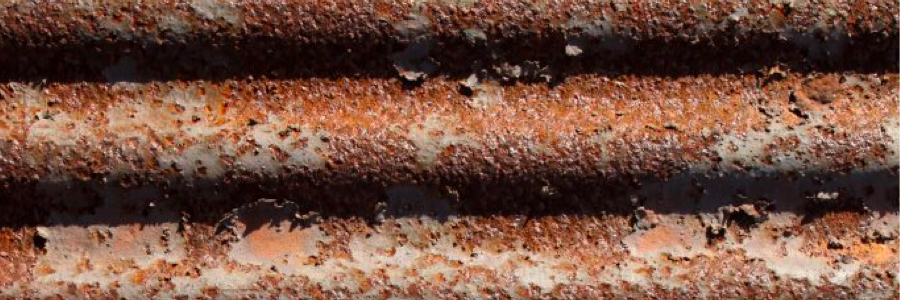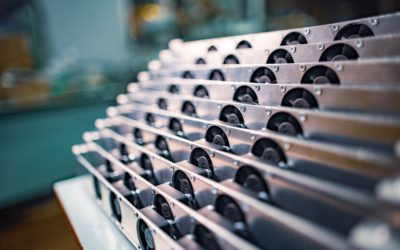The Comprehensive Guide to Choosing the Right Antifouling Coating for Your Heat Exchanger
Introduction
In the vast world of industrial applications, the role of heat exchangers is pivotal. These devices, responsible for the transfer of heat between two or more fluids, are integral components in many sectors, from HVAC to power generation, and from marine applications to food processing.
However, the efficiency of heat exchangers is often compromised by a universal issue: fouling. This accumulation of unwanted material on solid surfaces can drastically reduce the heat transfer rate, increase pressure drop, and lead to equipment failure if left unchecked.
One solution lies in the application of antifouling coatings. However, the plethora of options available in the market can be daunting, leaving you questioning: which is the right antifouling coating for your heat exchanger? This comprehensive guide aims to answer that question.
Understanding Heat Exchanger Fouling
Before we delve into the nuances of choosing an antifouling coating, it’s essential to understand what fouling is and how it impacts heat exchangers.
Fouling is characterized by the accumulation of undesired materials on solid surfaces. In the context of heat exchangers, this often translates into the buildup of sediments, minerals, biological organisms, or products of chemical reactions on the heat transfer surfaces.
There are four primary types of fouling: particulate, biological, chemical, and composite.
- Particulate fouling occurs due to the deposition of particles suspended in the working fluid. These can be rust particles in cooling water or dust particles in air coolers.
- Biological fouling, also known as biofouling, is caused by the growth of organisms like algae, barnacles, mussels, and microorganisms on the heat exchanger’s surfaces. This type of fouling is common in heat exchangers used in marine environments or those handling natural waters.
- Chemical fouling arises from the precipitation and deposition of compounds that are dissolved in the fluid. Examples include scale formation from hard water or salt deposition in seawater applications.
- Composite fouling is a combination of the above types and is the most challenging to handle.
The presence of these fouling layers presents a two-fold problem: it acts as an additional resistance to heat transfer and increases fluid friction, resulting in a higher pressure drop across the heat exchanger. Both these effects lead to a reduction in the overall heat exchanger efficiency and an increase in energy consumption. Furthermore, the material trapped in these fouling layers can lead to corrosion, thereby reducing the equipment’s lifespan.
The Role of Antifouling Coatings
To combat the adverse effects of fouling, antifouling coatings have been developed and widely employed. These are special types of surface treatments designed to reduce the ability of fouling agents to adhere to the surface of heat exchangers.
Antifouling coatings work by providing a surface that is unsuitable for the growth and adhesion of fouling agents. They do this through a variety of mechanisms. Some coatings repel fouling agents, making it difficult for them to adhere. Others kill fouling agents on contact or shortly after they attach.
There are several different types of antifouling coatings, each suited to combat different types of fouling:
- Non-stick coatings: These repel fouling agents, making it difficult for them to adhere to the heat exchanger’s surface. They are often used to prevent particulate and some forms of chemical fouling.
- Biocidal coatings: These are infused with biocides that kill biological organisms on contact. They are particularly effective against biological fouling.
- Hydrophilic coatings: These coatings attract water, creating a hydrated layer that fouling agents find difficult to penetrate.
- Hydrophobic coatings: These coatings repel water, making them unsuitable for the growth of biofouling agents.
- Fouling release coatings: These coatings have low surface energy, which makes it difficult for fouling agents to adhere. Any that do adhere are easily dislodged when the coated surface is moving, such as a ship’s hull or a fan blade.
Key Factors in Choosing an Antifouling Coating
Selecting the right antifouling coating for your heat exchanger is not a one-size-fits-all process. Several factors must be considered to ensure you get the maximum benefit from your chosen coating:
- Type of Fouling: As discussed earlier, different types of fouling require different types of coatings. Understanding the primary type of fouling that your heat exchanger is subjected to will be the first step in choosing the right coating.
- Operating Environment: The environmental conditions under which your heat exchanger operates can significantly influence the effectiveness of the coating. Factors such as temperature, pH, and fluid velocity can affect how well a coating works.
- Material of Construction: The material from which your heat exchanger is constructed can influence the type of coating you can use. Some coatings may not adhere well to certain materials, or they may have adverse reactions with them.
- Coating Durability: Depending on the conditions your heat exchanger operates under, you will need a coating that can withstand these without degrading over time. High fluid velocities, abrasive particles in the fluid, or corrosive chemicals can all reduce the lifespan of a coating.
- Regulatory Requirements: Depending on the industry and location, certain regulations may govern the use of antifouling coatings, particularly those containing biocides. Make sure to choose a coating that meets all necessary regulations.
- Budget: While it is crucial to get a coating that meets all your technical requirements, it must also fit within your budget. However, remember to consider not just the initial cost of the coating but also the long-term savings in terms of reduced maintenance and energy savings.
Consulting with Experts
While this guide provides a broad overview of the considerations in selecting an antifouling coating, every situation is unique. Consulting with technical experts who have an in-depth understanding of coatings, fouling, and heat exchangers can provide valuable insights tailored to your specific situation.
Conclusion
Choosing the right antifouling coating for your heat exchanger is a critical task. With the right choice, you can maintain optimal heat exchanger efficiency, minimize energy consumption, reduce maintenance costs, and prolong equipment life.
While the task may seem daunting given the myriad of choices, understanding the fundamentals of fouling and antifouling coatings can guide your selection process. Remember, each situation is unique, and what works best for one heat exchanger might not be the best for another.
By considering the type of fouling you’re dealing with, the operating conditions of your heat exchanger, and the regulations in your industry, you can begin to narrow down your choices. Consulting with a technical expert can further assist you in making the right decision.
In the end, the right antifouling coating will contribute to the longevity and efficiency of your heat exchanger, saving you time, energy, and money in the long run.
To learn more about the right antifouling technology for your heat exchangers, feel free to contact our experts.



